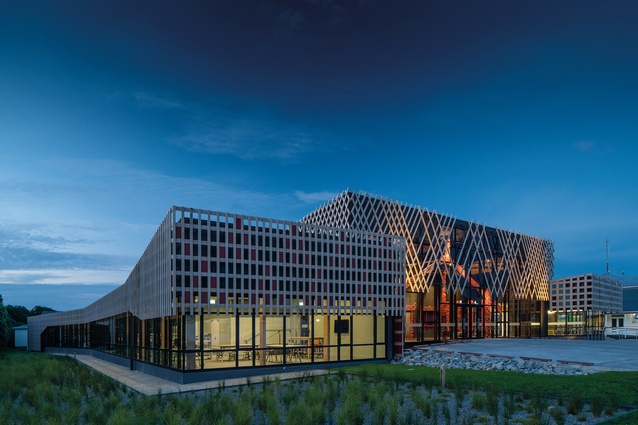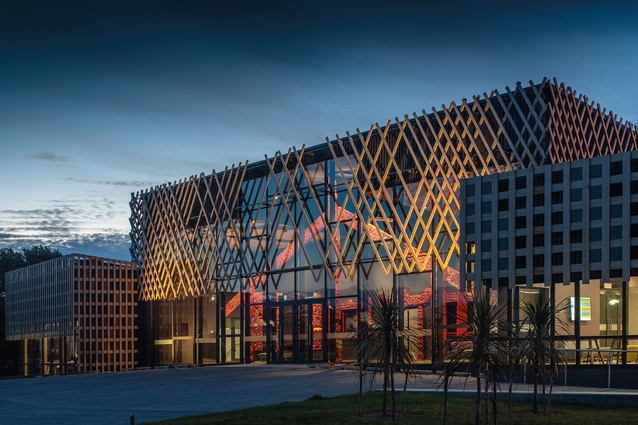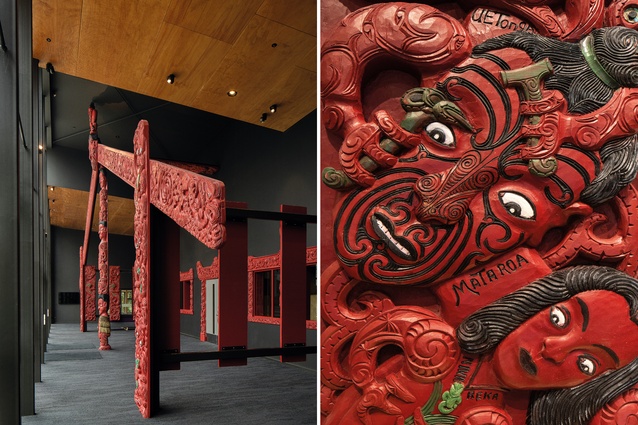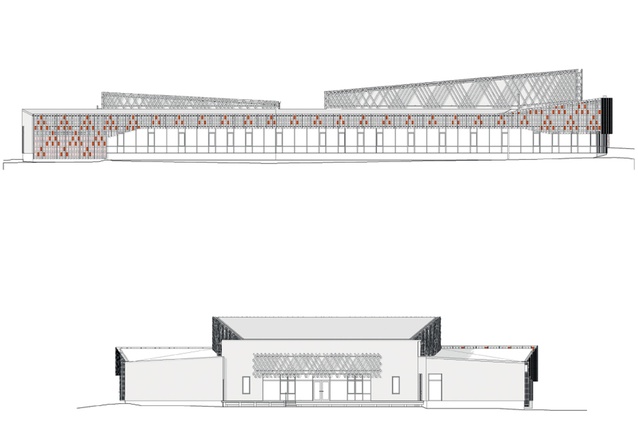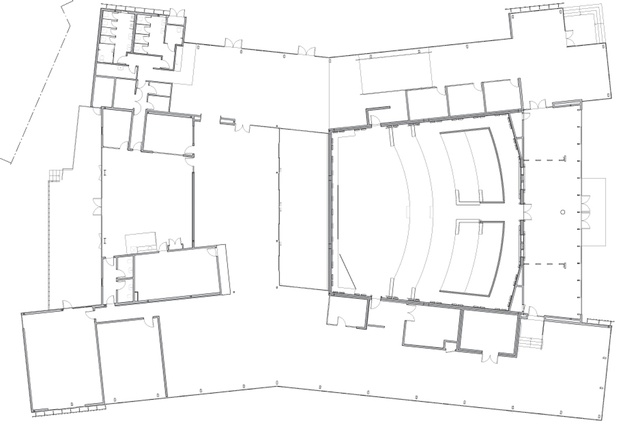Poipoia te kākano kia puawai
Nurture the seed and it will grow. Guy Marriage explores the ways in which Tennent Brown Architects has helped nurture the Ngā Purapura kākano at Ōtaki to grow into the three baskets of learning comprising Te Ara a Tāwhaki.
Just a few short years ago, a kākano (seed) was planted (metaphorically) in the fertile soils of Ōtaki, in the form of Ngā Purapura, a community training and wellness centre. The seed pod, Māuri Tau, has evidently helped foster new life in the community. New forms have taken root and blossomed in Te Wānanga o Raukawa, with a new building just across the road: Te Ara a Tāwhaki.
Three local iwi are represented here: Ngāti Toa, Te Ātiawa and Ngāti Raukawa. The tribes all migrated here around the 1820s and settled into the warm, coastal climate. At times set against one another, they are now more peaceably domiciled; these facilities are part of what holds them together, as growth and training for the youth of the iwi.
The journey for Te Wānanga o Raukawa has not been an easy one. Set in the sunny Kāpiti Coast, the Wānanga is trying to fulfil many roles to help the three different iwi grow and prosper. Good luck and good political fortune have not always been on their side. The nearby historic church, Rangiātea (built by Te Rauparaha and Octavius Hadfield in 1851), was tragically burned to the ground in 1995 and, while it was faithfully rebuilt in 2003, the replacement doesn’t have quite the same aura of aged heritage.

Each of the three iwi already had its own marae facilities so a further marae was not needed – although a common place of learning was desperately sought after. With no available funding during the 1990s, old relocatable buildings were purchased and served as classrooms for many years. Renovated at a third of the cost of new builds, they were never really that fit for purpose; the first library was also burned to a cinder. It wasn’t until a 2009 Treaty settlement and the appointment of Tennent Brown Architects that the iwi started to plan buildings that would really serve the right purposes.
While the stage-one buildings (Ngā Purapura) included a large sports hall and café, the new building here is more solidly focused around the three baskets of learning. A tiered teaching space, Te Kete Uruuru Rangi, takes pride of place in the centre, wrapped on each side with another structure – on one side, Te Kete Uruuru Matua (library: the basket of knowledge) and, on the other, Te Kete Uruuru Tau (the student hub).
Tennent Brown describes the sides of the building as ‘saddlebags’, referring both to their slightly sandwiched shape, as well as (perhaps) to their contents: storage for learning along the road ahead. Big, bold, laminated veneer lumber (LVL) beams span the interior spaces – large, simple and strong, to cope with building on the sandy loam soil.
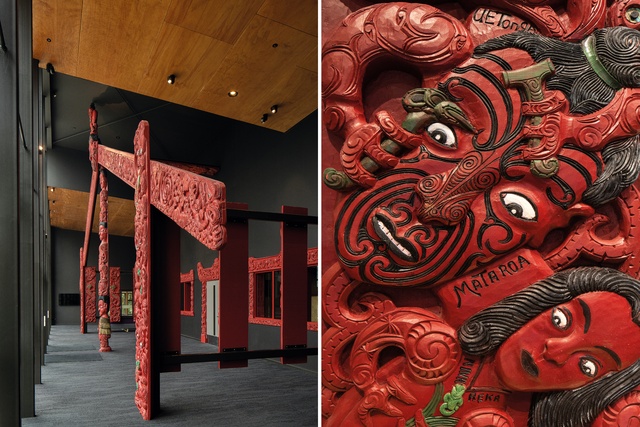
At first glance, you may think of the building as a whare whakairo (carved meeting house) suspended inside a glass-fronted box. Criss-crossing timber crosses and infilled colours pattern the outside, a tukutuku panel writ large on the walls. At night, the carved frontage of the tekoteko, maihi and raparapa shine out, softly illuminated behind the mahau at the glazed frontage. By day, under the bright sun, the carvings are almost invisible behind the smoky glass frontage. This is not a marae, not a wharenui; it is a place of learning unlike any other.
There is a curious tale here. The carvings of all the hapū were completed many years ago (for a proposed new wharenui) by master carvers under the supervision of Te Whetu Marama o te Ata Kereama (Uncle Kelly Kereama) but were deemed surplus to requirements when the decision was made that a new wharenui was not needed. They were then stored in a container for more than three decades, waiting patiently for the right occasion to be presented. The right time and place is now.
The carvings take the form of a house, with comforting similarities to more traditional marae forms, although not quite the same – here, they are floating freely, suspended off the walls. There is a carved doorway with elaborate carved pare over the top and whakawae down each side – an invitation to enter. Within the inner chamber, the carvings continue around the walls.
The ancient tōtara logs, once growing so plentifully in the district, still look crisp and fresh with their whakapapa carvings of local genealogy. The quality of the carvings is superb, all crafted many years ago: family history writ large and confidently. A painted tāhuhu (ridge beam) anchors the front of the room to the rear, cunningly hinging apart, in a Thunderbirds fashion, to allow a projector screen to be lowered into place when classes need traditional PowerPoint lectures.

It is a welcome break from the usual bland lecture theatre that I’m used to at Victoria, and it is no doubt comforting to learn under the watchful pāua eyes of your tūpuna on the walls nearby, but, visually, I found it a little disconcerting. Being a tiered lecture space with much more volume than is usual in a more traditional wharenui, there is a disconnect – a disembodied floating, with carvings neither touching the floor nor reaching the ceiling. Māori ancestral carving seems to be appliquéd wall panelling, rather than the more traditional whare whakairo mirroring of the body. But that’s more my pākehā modernist architect hang-up than a design fault; to Māori, these carvings are family portraits of ancestors, rather than literal structural support.
To the south side, Te Kete Uruuru Matua is what pākehā would term a library, although these facilities are increasingly rare beasts in any culture nowadays. Here, the library functions as a multimedia learning space, complete with comfy seats, models of the building, ancestral history resources, books and a few scattered computers. This is not a community rich in computer technology but one rich in family histories.
Centred around an internal garden space (a nice surprise) with wall cladding made from giant fibre-cement tukutuku panels, the library then flows around to the other side – the student hub, including whare paku (nice graphics!) and space for socialising.
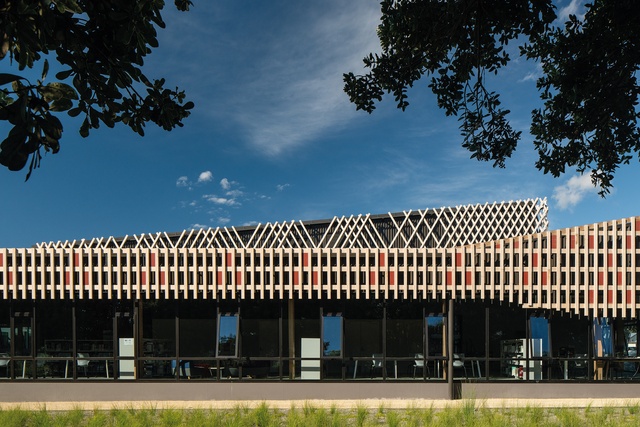
Tennent Brown continues to grow its work in this sector, fresh from its success with Tūhoe at the visitors’ centre in the Urewera forest. A strong understanding of the needs of the client is evident (certainly not an easy task to be satisfying three iwi at once) and this manifests itself in the easygoing camaraderie I observe on site between architect and client. Respect is given on both sides.
The Wānanga certainly appears satisfied with the progress so far and there are plans for more stages yet to come. On the day we visited, the sounds of tamariki singing and chanting echoed out across the square, from a temporary school building shaded by the bulk of a regenerating tōtara. There’s good hope for the future of Ōtaki and good lessons for all to be learnt at the Wānanga.
This article first appeared in Architecture New Zealand magazine.


